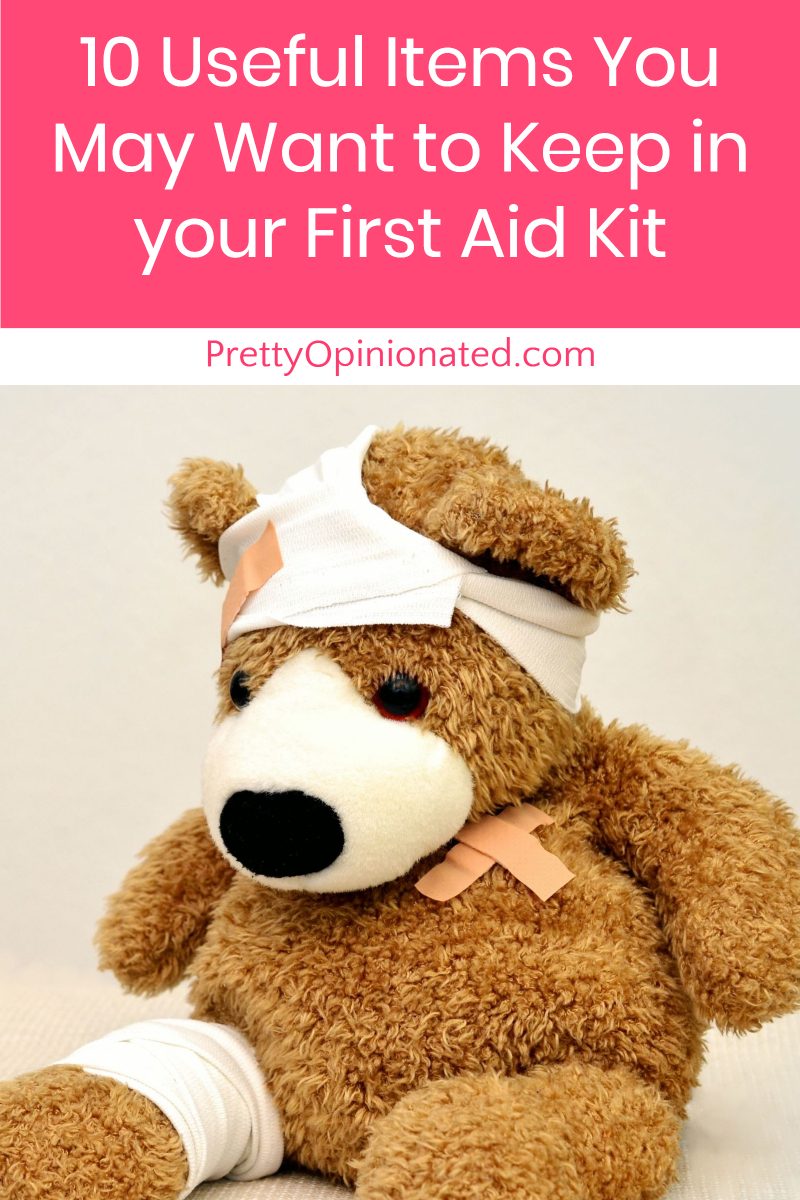Bumps, cuts, splinters—they’re just a few reasons why a first aid kit is useful to have. Every family should have a first aid kit including all the essentials you may need. When an unexpected accident or injury occurs, a first aid kit will be helpful.
Here are 10 first aid items that you may want to include in your first aid kit.
10 First Aid Kit Essentials
1. A first aid manual
It may seem unnecessary to have a first aid manual in your kit because most first aid items are easy to use. However, in the event that you are unsure of how to treat an injury, a first aid manual may be very useful.
2. Sterilized adhesive bandages of various sizes
It’s important to have adhesive bandages in several sizes for your first aid kit so that you’ll be prepared when someone has a minor cut.
3. Sterilized gauze pads
Gauze pads are perfect for managing larger cuts or scrapes, as they’re usually able to stop excess bleeding. They can also be used to apply ointments, and you can even use them to cover a recently cleaned wound. You can purchase almost any type of bandage from a surgical supply store, as well as most other first aid items.
4. Medical tape and scissors
If you’re including gauze pads in your first aid kit, you can’t forget the medical tape! It’s also a good idea to keep a small pair of scissors in case you need to cut gauze or medical tape.
5. Elastic bandages
In addition to adhesive bandages and gauze, elastic bandages are also necessary for a first aid kit. Elastic bandages are great for wrapping around injuries, especially potential sprains. When an unexpected injury happens, this type of bandage may be useful to have.
6. Alcohol swabs or pads
Every wound should be properly cleaned and alcohol swabs are great for that purpose. Cleaning an infected area or wound with an alcohol swab before applying ointment or bandages is important. You can also use them to sterilize tweezers if needed.
7. Instant cold pack
Many healthcare professionals recommend putting ice on most injuries, especially bumps. Although ice packs kept in a freezer can typically be useful, an instant cold pack intended for one-time use is important for a first aid kit. The packs aren’t cold until the packaging seal is broken, which makes them handy in case you need to start icing an injury immediately.
8. Tweezers
Small splinters are a common reason why tweezers are needed, but they can also be handy for bigger injuries. They can be used to pull glass, dirt, or splinters from wounds. Additionally, they can also be used to pull stingers out of bee stings.
9. Pulse oximeter
You may be wondering “why on earth would I need a pulse oximeter in my home?” The answer is simple: it’s important to be able to ensure that your heart rate is safe. A pulse oximeter is a small device that measures your heart rate and oxygen level simply just by putting it on your finger and pressing the “on” button. This can be useful for anyone in your family – excessive exercise, chronic pain, and anxiety are all reasons why checking your heart rate would be useful.
10. Pain relievers (ibuprofen, acetaminophen, and aspirin)
Because most households keep pain relievers separate from a first aid kit, it’s easy to assume that it isn’t an important item to include in the kit. However, it’s smart to keep small containers of pain relievers (including ibuprofen, acetaminophen, and aspirin) in your family’s first aid kit. When someone is injured or hurt, it may be one of the most useful items you can have.
These 10 items are some of the most important items you’ll want to have in your first aid kit, but, of course, there’s no limit to what you can include.
Mayo Clinic has a full list of items recommended for a first aid kit if you want to be completely prepared for almost any injury or accident.
You may be unsure of where to keep your family’s first aid kit, but the answer depends on a few factors. It should be easy to find, but not within the reach of young children. Keeping it in a cabinet that only adults can reach is a safe idea. However, be sure that you are designating the spot where it is kept because you never know where you’ll be when you need it.
You may also want to create two kits. Many people opt to keep a full kit in a central room of their home, such as a bathroom, while keeping a small kit in the car. There’s no limit to how many kits you can make or where you keep it as long as they’re in safe spots only accessible to adults or those old enough to use them.
No matter what you decide, you’re making a smart choice by creating your own first aid kit.





I don’t think I would’ve thought of a first aid manual, but that’s an excellent idea. After all, you need to know what to do.
Yes! I always keep all this and more in my first aid kit!
What else do you need with our first aid kit???????????????